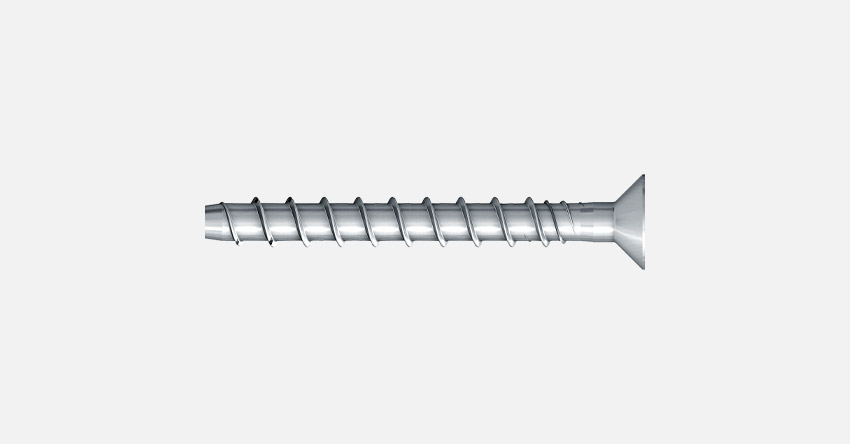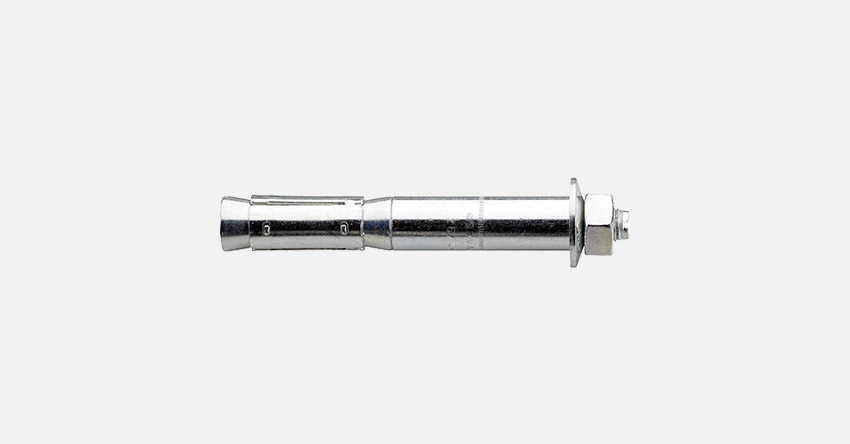Cracked concrete
Heavy-duty anchor Guidebook – Part 2
The new heavy-duty anchor guide now gives you useful tips and information on all aspects of anchoring technology on a regular basis.
In the second part of our heavy-duty anchor guide, we will deal with the “cracked concrete” substrate in detail, and show the requirements of this building material for the anchoring elements.
Now, to understand which side of a ceiling is the torn side and which is the non-torn side, we can imagine a simple, thin board that crosses a stream as a footbridge. The dead weight of the board and the added weight by people cause the board to bend. The bending stress within the board results in a compression load on the top of the board and tensile stress on the underside.
If there are several supports, the tensile and compression zones change as shown in the following figure:
In the second part of our heavy-duty anchor guide, we will deal with the “cracked concrete” substrate in detail, and show the requirements of this building material for the anchoring elements.
Cracked concrete
In our first contribution to the different substrates, we described the high compressive strength of concrete as a major advantage. However, the tensile strength is very low, so that small cracks develop already with low tensile stress.Now, to understand which side of a ceiling is the torn side and which is the non-torn side, we can imagine a simple, thin board that crosses a stream as a footbridge. The dead weight of the board and the added weight by people cause the board to bend. The bending stress within the board results in a compression load on the top of the board and tensile stress on the underside.
If there are several supports, the tensile and compression zones change as shown in the following figure:
The lower side is elongated due to the expansion. A tensile force is created that tears the surface.
In addition to the own weight, other physical loads such as wind load or temperature fluctuations also influence the movements in concrete ceilings and walls. The concrete wall will not tear, but the small cracks cause a significant side effect: If a hole is drilled in an "expanded" side, it acts like a predetermined breaking point. This means that the spot is weakened and therefore predestined for the first small cracks. A gap splits the anchoring base and creates space. This significantly reduces the load-carrying capacity of anchoring elements without controlled expansion behaviour.
Anchoring elements that are not suitable for cracked concrete can only be used if it has been officially proven that there are no cracks in the concrete. However, as described above, this is difficult.
This is why we always recommend the use of anchoring elements that are classified as suitable for cracked concrete to avoid errors.
Tensile and compression zones in construction
The distribution of tensile and compression zones within a component under bending stress is rarely as clear as with a footbridge. In the construction industry, concrete parts are guided over several supports and are usually connected to other components like for example a wall at the end support. In addition, cracked concrete can only be clearly determined if the bending stress curve of the components is known. Only the structural engineer knows the bending stress curve.In addition to the own weight, other physical loads such as wind load or temperature fluctuations also influence the movements in concrete ceilings and walls. The concrete wall will not tear, but the small cracks cause a significant side effect: If a hole is drilled in an "expanded" side, it acts like a predetermined breaking point. This means that the spot is weakened and therefore predestined for the first small cracks. A gap splits the anchoring base and creates space. This significantly reduces the load-carrying capacity of anchoring elements without controlled expansion behaviour.
Anchors in cracked concrete
For this reason, only anchoring elements that are classified as suitable for cracked substrate may be used in cracked concrete. They can either provide controlled expansion in the crack or are dimensioned so that the geometry such as the thread shape of a concrete screw ensures further hold. This ensures that attachments are securely anchored at all times.Anchoring elements that are not suitable for cracked concrete can only be used if it has been officially proven that there are no cracks in the concrete. However, as described above, this is difficult.
This is why we always recommend the use of anchoring elements that are classified as suitable for cracked concrete to avoid errors.



